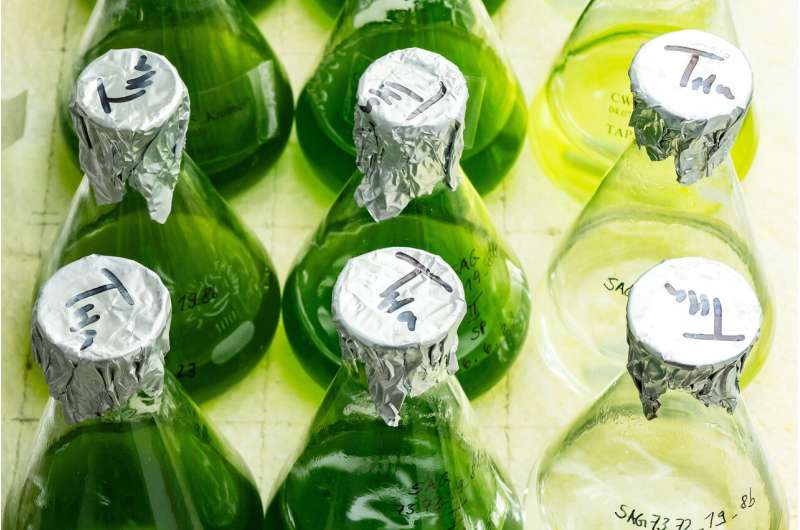This article has been reviewed according to Science X's editorial process and policies. Editors have highlighted the following attributes while ensuring the content's credibility:
fact-checked
peer-reviewed publication
trusted source
proofread
Researchers explain how green algae and bacteria together contribute to climate protection

A research team at Friedrich Schiller University Jena, Germany has now found a bacterium that forms a team with a green alga. Both microorganisms support each other in their growth. Additionally, the bacterium helps the microalga to neutralize the toxin of another, harmful bacterium. The fundamental understanding of algal-bacterial interactions also plays an important role in climate protection, as it can help to understand and thus protect this ecologically important partnership.
The results of the study are published in the journal Proceedings of the National Academy of Sciences.
Maria Mittag, corresponding author of the study and Professor of General Botany at Friedrich Schiller University Jena in Germany explains, "We were able to show that the bacterium Mycetocola lacteus lives in a partnership with the green microalga Chlamydomonas reinhardtii, from which both sides benefit. While the bacterium receives certain essential B vitamins and a sulfur-containing amino acid from the alga, the growth of the green alga is optimized.
"In addition, the bacterium Mycetocola lacteus and a related bacterial species serve as helper bacteria; they jointly protect the alga from harmful attacks by other bacteria by inactivating a toxin of these hostile bacteria through cleavage. In this way, the bacterial helpers ensure the survival of the algae."
Like bacteria, microalgae are microorganisms. They were found in fresh water as well as in oceans and soil. "Alongside land plants, algae and cyanobacteria produce a large proportion of oxygen and bind around half of the carbon dioxide in the atmosphere through photosynthesis. They therefore make an important contribution to life on Earth," says Mittag.
Only healthy algae can absorb and bind carbon dioxide well
This knowledge is also of great importance against the backdrop of global warming. "Only healthy algae can absorb and bind carbon dioxide well. It is therefore important to know which bacteria help the algae to remain photosynthetically active and at the same time neutralize the effect of harmful bacteria. In our study, we found that the bacteria and microalgae used also occur together in their natural environment," says Mittag.
In their natural habitats, microorganisms interact with each other and thus shape their coexistence. "In our research, we analyze the complex interplay of these small creatures in order to understand how they influence each other and which factors have a positive or negative effect on their growth.
This is crucial in order to understand the mechanisms that contribute to the preservation of natural ecosystems and to develop effective protective measures," explains Christian Hertweck, Professor of Natural Product Chemistry at the University of Jena and Head of the Department of Biomolecular Chemistry at the Leibniz Institute for Natural Product Research and Infection Biology.
The study was carried out as part of a joint research project involving researchers from both the Cluster of Excellence "Balance of the Microverse" and the Collaborative Research Center "ChemBioSys" at the University of Jena. "By combining the biological perspective with analytical natural product chemistry and with our professional expertise in organic synthesis, we have demonstrated the mechanism by which the bacterial toxin is inactivated," explains Hans-Dieter Arndt, Professor of Organic Chemistry at the University of Jena.
More information: Mittag, Maria, A mutualistic bacterium rescues a green alga from an antagonist, Proceedings of the National Academy of Sciences (2024). DOI: 10.1073/pnas.2401632121. doi.org/10.1073/pnas.2401632121
Journal information: Proceedings of the National Academy of Sciences
Provided by Friedrich Schiller University of Jena




















